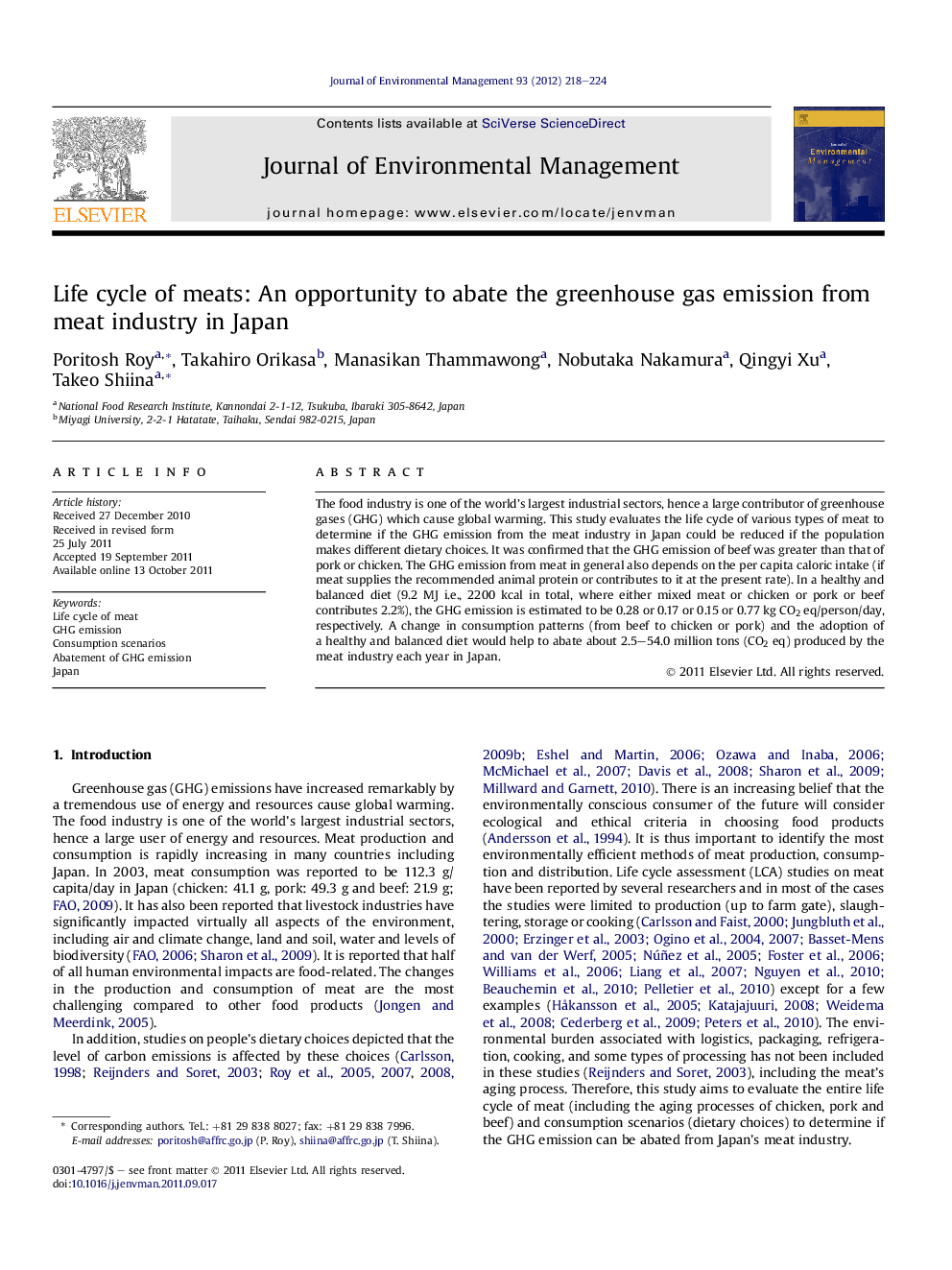| Article ID | Journal | Published Year | Pages | File Type |
|---|---|---|---|---|
| 1056983 | Journal of Environmental Management | 2012 | 7 Pages |
The food industry is one of the world’s largest industrial sectors, hence a large contributor of greenhouse gases (GHG) which cause global warming. This study evaluates the life cycle of various types of meat to determine if the GHG emission from the meat industry in Japan could be reduced if the population makes different dietary choices. It was confirmed that the GHG emission of beef was greater than that of pork or chicken. The GHG emission from meat in general also depends on the per capita caloric intake (if meat supplies the recommended animal protein or contributes to it at the present rate). In a healthy and balanced diet (9.2 MJ i.e., 2200 kcal in total, where either mixed meat or chicken or pork or beef contributes 2.2%), the GHG emission is estimated to be 0.28 or 0.17 or 0.15 or 0.77 kg CO2 eq/person/day, respectively. A change in consumption patterns (from beef to chicken or pork) and the adoption of a healthy and balanced diet would help to abate about 2.5–54.0 million tons (CO2 eq) produced by the meat industry each year in Japan.
► This study evaluates the life cycle of various types of meat (chicken, pork and beef). ► Different consumption scenarios were considered. ► The GHG emission of beef was greater than that of pork or chicken. ► The GHG emission depends on the consumption scenarios. ► A change in consumption patterns would help to abate GHG emission from meat industry.
